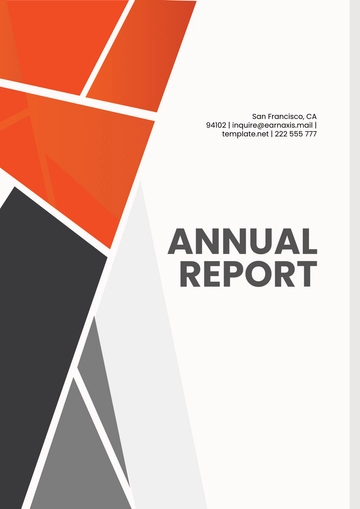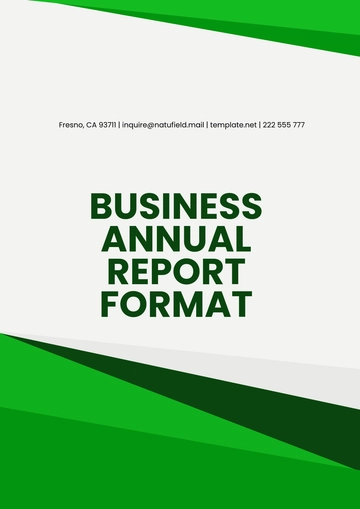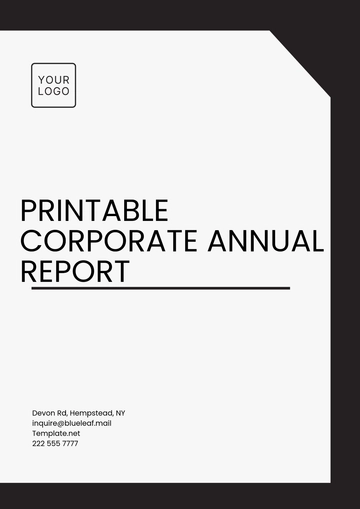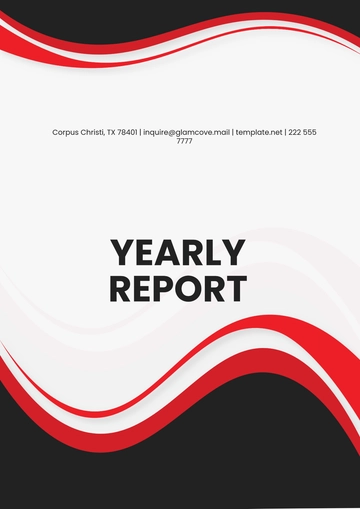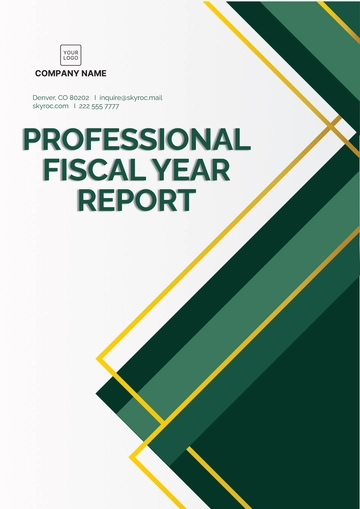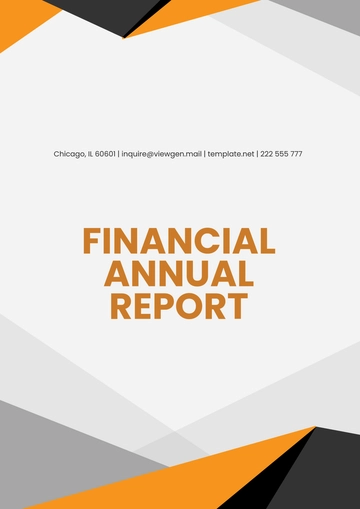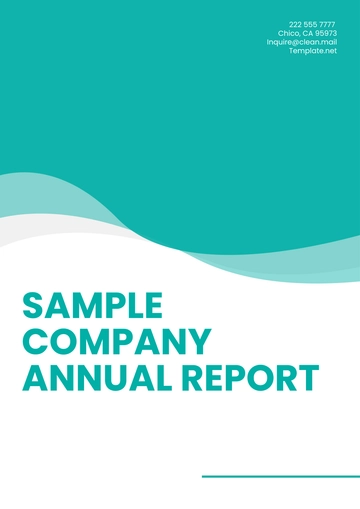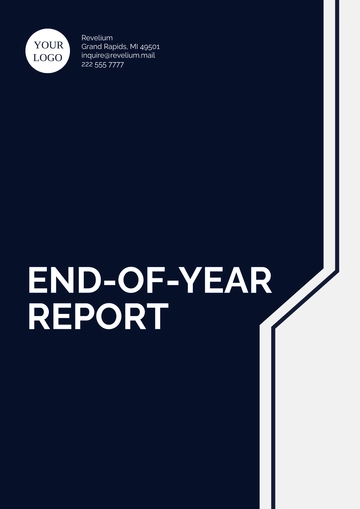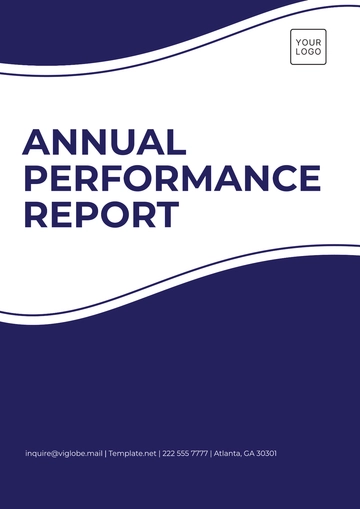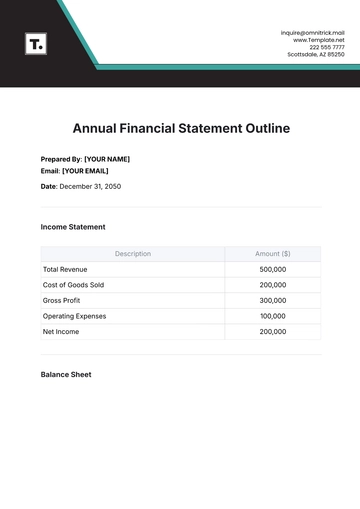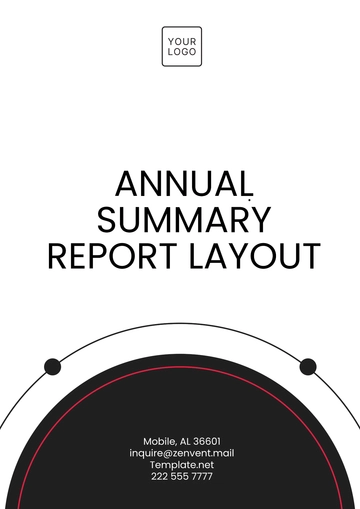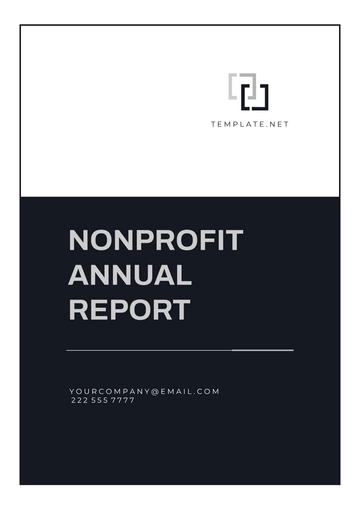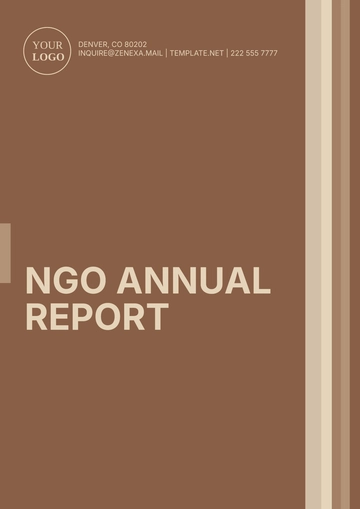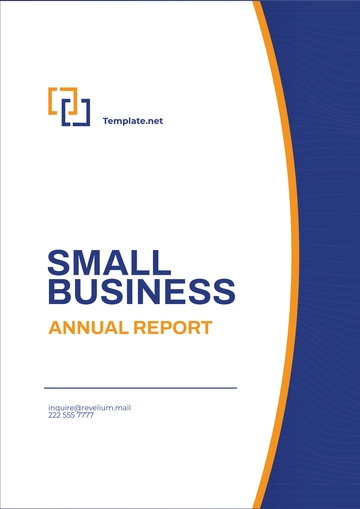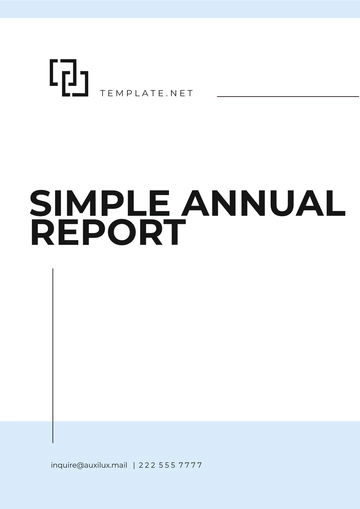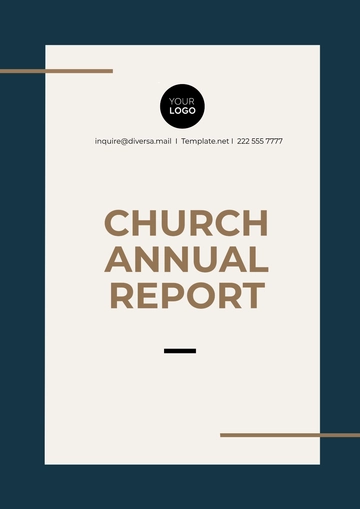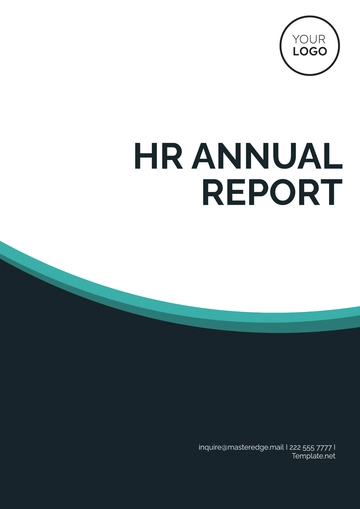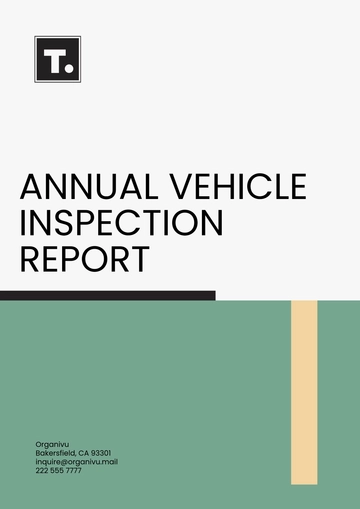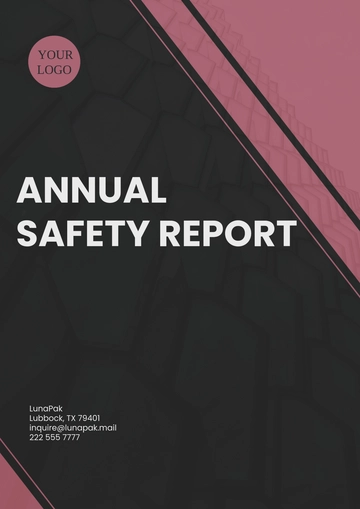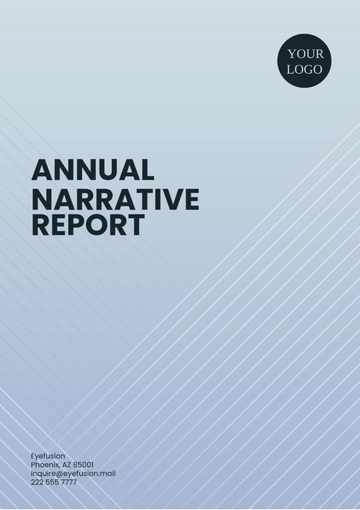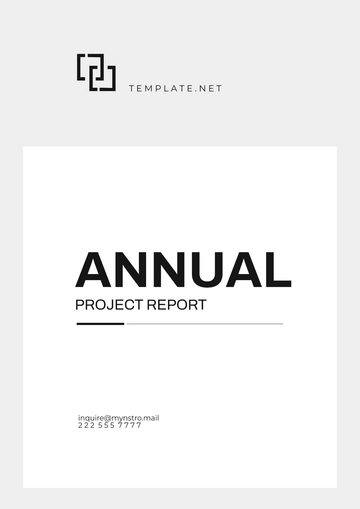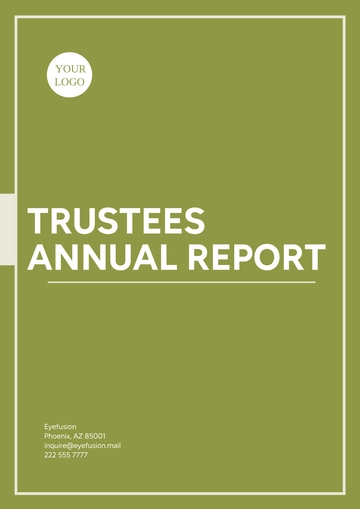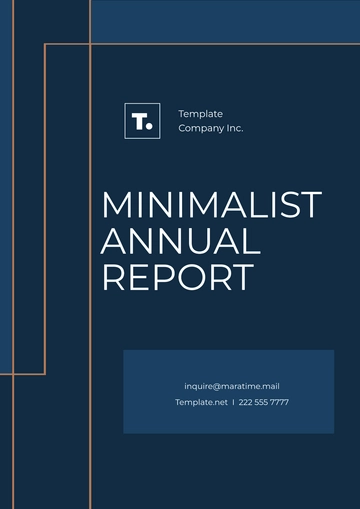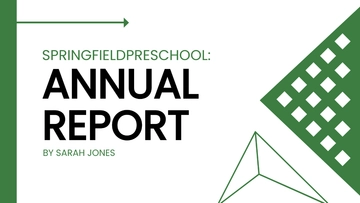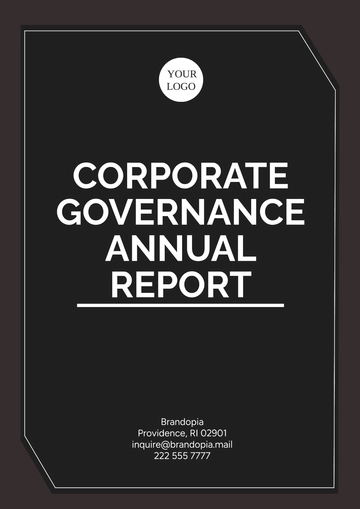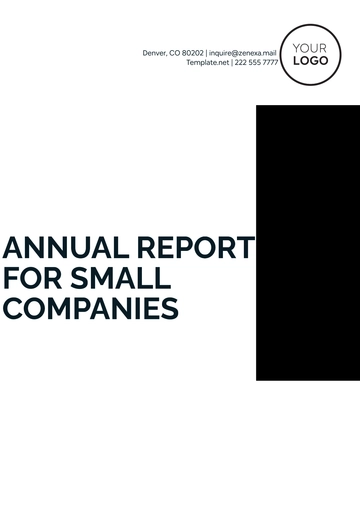Free Restaurant Annual Report
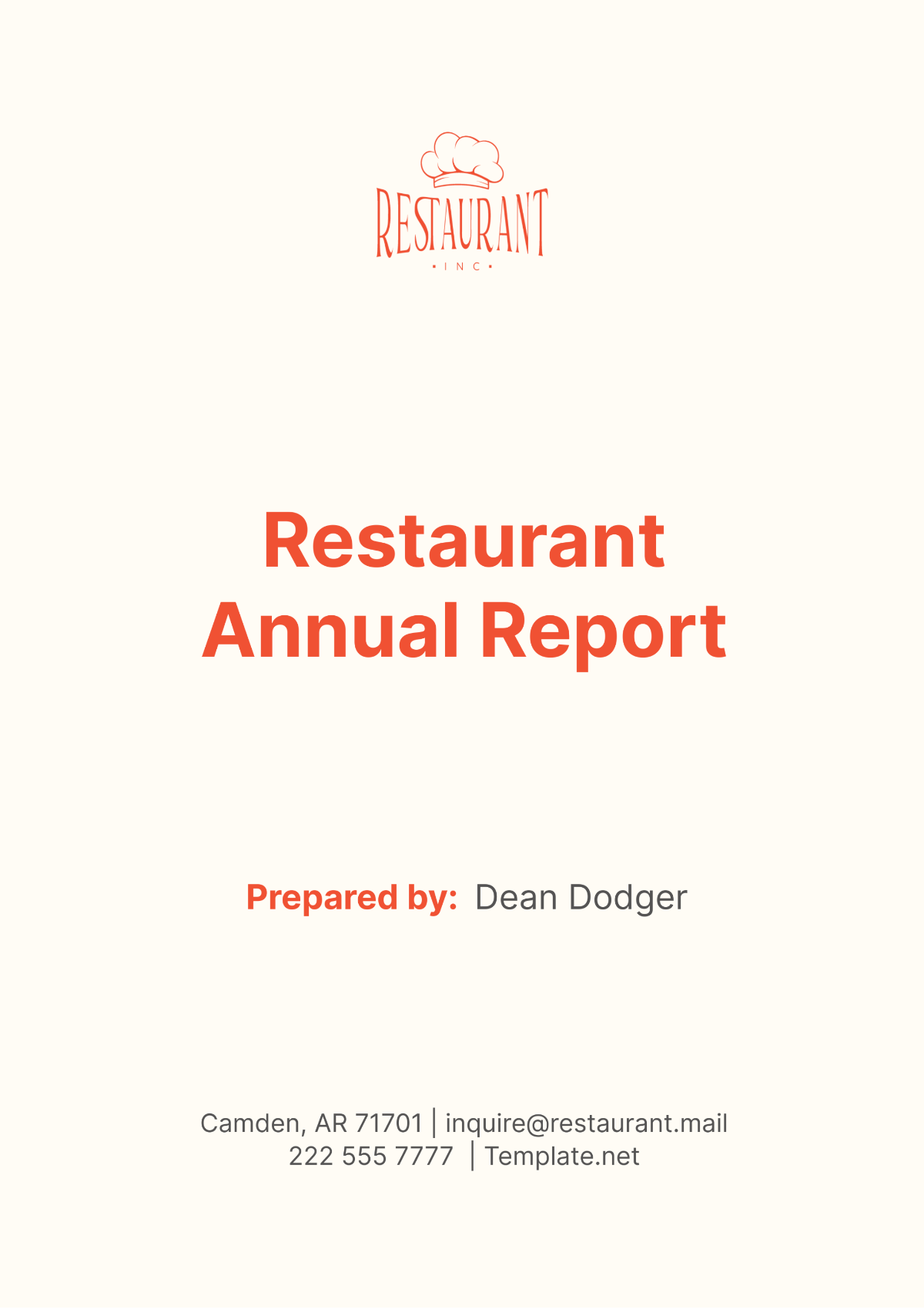
I. Executive Summary
This comprehensive annual report reviews the operational, financial, and customer service performance of [YOUR COMPANY NAME] for the year 2050. It provides a detailed assessment aimed at recognizing success areas, identifying improvement opportunities, and formulating strategies for future challenges. The report integrates key metrics across various departments to offer a holistic view of the restaurant’s health and growth trajectory.
Key Annual Metrics at a Glance:
Annual Revenue: $1,450,000
Annual Expenses: $1,050,000
Net Profit: $400,000
Average Customer Rating: 4.5 out of 5
Customer Satisfaction Index: 88%
This executive summary serves as a roadmap for detailed analysis and strategic direction discussed in the following sections.
II. Financial Overview
Annual Financial Health
The financial section of our annual report focuses on the revenue, expenses, and overall profitability for [YOUR COMPANY NAME] in 2050. It reflects the financial resilience and strategic financial management implemented throughout the year. The key financial figures are detailed in the table below:
Table 1: Key Financial Figures for 2050
Description | Amount ($) |
|---|---|
Total Revenue | $1,450,000 |
Total Expenses | $1,050,000 |
Net Profit | $400,000 |
This table highlights a solid financial year, showcasing our ability to generate substantial revenue while maintaining control over expenses, leading to a healthy net profit margin.
Expense Breakdown
A detailed analysis of expenses helps in identifying major cost drivers and areas where financial efficiency can be enhanced. Below is a categorization of the primary expenses:
Table 2: Detailed Expense Breakdown for 2050
Category | Amount ($) | Percentage of Total Expenses |
|---|---|---|
Food Supplies | $400,000 | 38% |
Labor | $350,000 | 33% |
Utilities | $100,000 | 10% |
Marketing | $150,000 | 14% |
Miscellaneous | $50,000 | 5% |
The expense breakdown provides a clear view of where the funds are being allocated, highlighting the largest areas of spending such as food supplies and labor, which are crucial for our operations.
Financial Trend Analysis
Year-over-year financial data comparison allows us to track our performance and make informed predictions for future financial planning. This analysis supports strategic decision-making by identifying trends in revenue and expenses, indicating the effectiveness of our financial strategies.
III. Customer Insights
Gaining a deep understanding of our customers’ preferences and satisfaction levels is paramount to tailoring our offerings and enhancing service delivery. This section delves into the customer feedback collected throughout 2050.
Customer Feedback Overview
We collect customer feedback through various channels to gauge satisfaction and gather insights on how we can improve. The response distribution is presented in the following table:
Table 3: Customer Feedback Distribution for 2050
Source | Responses |
|---|---|
Digital Reviews | 1,800 |
Comment Cards | 1,200 |
Social Media | 2,000 |
This table illustrates the extensive feedback collected, indicating active customer engagement across multiple platforms.
Detailed Feedback Analysis
Our customer satisfaction metrics are an important gauge of our service quality and customer happiness. The average rating and satisfaction index for 2050 are detailed below:
Table 4: Customer Satisfaction Metrics for 2050
Satisfaction Metric | Value |
|---|---|
Average Rating | 4.5 |
Customer Satisfaction Index | 88% |
These metrics reflect high levels of customer satisfaction, showcasing the effectiveness of our service and menu offerings.
Customer Demographics and Behavior
Understanding the demographics and behavior of our customers helps us to effectively target our marketing efforts and menu design. This insight guides our strategic decisions regarding promotions and product offerings.
IV. Operational Efficiency
Operational efficiency is crucial for maintaining high service standards and ensuring customer satisfaction. This section reviews the operational performance metrics of [YOUR COMPANY NAME] over the year 2050.
Operational Metrics
Efficient operations are the backbone of any successful restaurant. The following table provides a snapshot of our key operational metrics:
Table 5: Key Operational Metrics for 2050
Metric | Annual Average |
|---|---|
Meal Preparation Time | 10 minutes |
Staff Attendance Rate | 95% |
Customer Service Response Time | 2 minutes |
These figures demonstrate our commitment to operational excellence, with swift meal preparation and responsive customer service being highlights of our operational strategy.
Bottleneck Identification and Solutions
Identifying and addressing operational bottlenecks is essential for smooth restaurant operations. Our analysis focuses on key areas such as meal preparation and customer service, where improvements can enhance efficiency and customer satisfaction.
Staff Training and Performance
Investing in our staff through regular training programs is fundamental to our operational strategy. These programs aim to enhance both the efficiency of service delivery and the overall customer experience, directly contributing to our operational success.
V. Marketing and Promotions
Evaluating Marketing Effectiveness
Marketing and promotional activities are vital for driving customer acquisition, enhancing brand visibility, and increasing customer loyalty. This section assesses the impact of our marketing strategies implemented throughout the year 2050 at [YOUR COMPANY NAME].
Marketing Campaigns Overview
To understand the effectiveness of our marketing efforts, we review the reach, engagement, and conversion rates of each campaign type. The data is summarized in the table below:
Table 6: Overview of Marketing Campaigns for 2050
Campaign Type | Reach | Engagement | Conversion Rate |
|---|---|---|---|
Social Media Ads | 250,000 impressions | 30,000 clicks | 12% |
Email Marketing | 50,000 subscribers | 20,000 opens | 20% |
Local Event Sponsorships | 3,000 attendees | 1,500 interactions | 25% |
This table demonstrates the broad and effective reach of our marketing activities, highlighting particularly strong performance in local event sponsorships which exhibit the highest conversion rate.
Promotional Activities Impact
Promotions are a key aspect of our marketing strategy, aimed at boosting sales and enhancing customer engagement. The impact of various promotional activities over the year is detailed below:
Table 7: Impact of Promotional Activities in 2050
Promotion | Discount Offered | Increase in Sales |
|---|---|---|
Holiday Specials | 20% off | 30% |
Loyalty Program Enhancements | N/A | 35% increase in active members |
New Menu Launch | 15% off new items | 25% |
These figures illustrate the effectiveness of our promotional strategies, with significant sales uplifts and loyalty program growth stemming from targeted discounts and new offerings.
Effectiveness of Marketing Efforts
Our analysis of marketing ROI and customer acquisition costs informs our future marketing budget allocations and strategies. Focusing on high-ROI activities will allow us to optimize our marketing spend and maximize engagement and conversions.
VI. Conclusion and Recommendations
Year-End Summary
The year 2050 has been a period of strong performance for [YOUR COMPANY NAME], marked by significant achievements across various aspects of our operations. This section summarizes our overall performance and outlines strategic recommendations for the coming year.
Summary of Annual Performance
Our accomplishments in 2050 are a testament to the hard work and strategic focus of our team. We have seen robust growth in revenue, a significant improvement in customer satisfaction, and enhanced operational efficiency. These achievements underscore our commitment to excellence and innovation in the restaurant industry.
Table 8: Year-End Performance Summary
Performance Indicator | Value |
|---|---|
Revenue Growth | 10% increase |
Customer Satisfaction Growth | 5% increase |
Operational Efficiency Gain | 8% improvement |
This table highlights key performance indicators that reflect our success and areas of growth over the past year.
Recommendations for 2051
To build on this year's successes and address areas needing improvement, we recommend the following strategic actions:
Enhance Training Programs: Strengthen our commitment to staff development to maintain high service standards and adapt to evolving customer expectations.
Cost-Effective Marketing Strategies: Allocate more resources to proven high-ROI marketing channels, particularly digital and event marketing.
Expand Customer Engagement: Develop more personalized marketing approaches and leverage technology to enhance customer interaction and satisfaction.
Rigorous Cost Management: Continue to monitor and negotiate supplier contracts to reduce operational costs and improve profit margins.
Immediate Actions
Quarterly Staff Training: Launch advanced training modules focusing on customer service and operational efficiency by Q2 2051.
Increase Marketing Budget: Allocate an additional 20% towards digital marketing to target a 15% increase in customer acquisition by Q3 2051.
Customer Feedback System: Implement a real-time feedback tool on our digital platforms to quickly address and resolve any customer issues, aiming for a 90% satisfaction index by year-end.
This comprehensive review and forward-looking plan set the stage for sustained growth and continuous improvement at [YOUR COMPANY NAME], ensuring that we remain competitive and responsive to market demands and customer needs in 2051 and beyond.
- 100% Customizable, free editor
- Access 1 Million+ Templates, photo’s & graphics
- Download or share as a template
- Click and replace photos, graphics, text, backgrounds
- Resize, crop, AI write & more
- Access advanced editor
Illuminate your restaurant's achievements with Template.net's Restaurant Annual Report Template. Capture milestones, financial insights, and growth strategies in a comprehensive document that speaks volumes about your success. With our AI editor tool, customization is seamless, allowing you to tailor the report to resonate with stakeholders. Showcase your restaurant's journey and vision with clarity and confidence using Template.net.
You may also like
- Sales Report
- Daily Report
- Project Report
- Business Report
- Weekly Report
- Incident Report
- Annual Report
- Report Layout
- Report Design
- Progress Report
- Marketing Report
- Company Report
- Monthly Report
- Audit Report
- Status Report
- School Report
- Reports Hr
- Management Report
- Project Status Report
- Handover Report
- Health And Safety Report
- Restaurant Report
- Construction Report
- Research Report
- Evaluation Report
- Investigation Report
- Employee Report
- Advertising Report
- Weekly Status Report
- Project Management Report
- Finance Report
- Service Report
- Technical Report
- Meeting Report
- Quarterly Report
- Inspection Report
- Medical Report
- Test Report
- Summary Report
- Inventory Report
- Valuation Report
- Operations Report
- Payroll Report
- Training Report
- Job Report
- Case Report
- Performance Report
- Board Report
- Internal Audit Report
- Student Report
- Monthly Management Report
- Small Business Report
- Accident Report
- Call Center Report
- Activity Report
- IT and Software Report
- Internship Report
- Visit Report
- Product Report
- Book Report
- Property Report
- Recruitment Report
- University Report
- Event Report
- SEO Report
- Conference Report
- Narrative Report
- Nursing Home Report
- Preschool Report
- Call Report
- Customer Report
- Employee Incident Report
- Accomplishment Report
- Social Media Report
- Work From Home Report
- Security Report
- Damage Report
- Quality Report
- Internal Report
- Nurse Report
- Real Estate Report
- Hotel Report
- Equipment Report
- Credit Report
- Field Report
- Non Profit Report
- Maintenance Report
- News Report
- Survey Report
- Executive Report
- Law Firm Report
- Advertising Agency Report
- Interior Design Report
- Travel Agency Report
- Stock Report
- Salon Report
- Bug Report
- Workplace Report
- Action Report
- Investor Report
- Cleaning Services Report
- Consulting Report
- Freelancer Report
- Site Visit Report
- Trip Report
- Classroom Observation Report
- Vehicle Report
- Final Report
- Software Report
